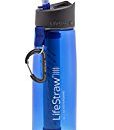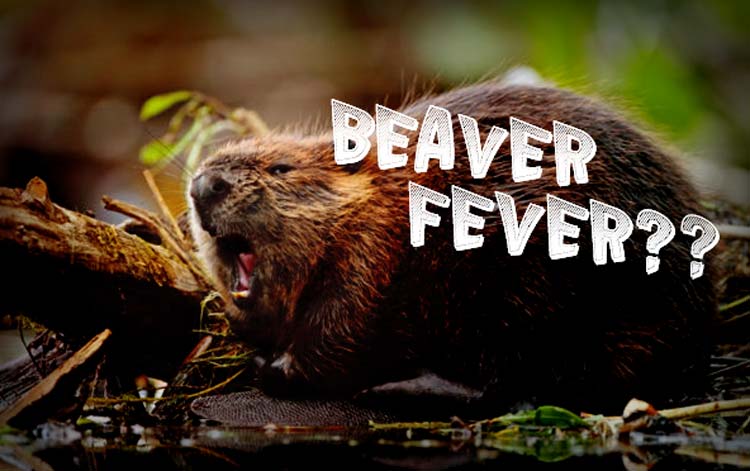Most readers will chuckle or at least smile at the name of this surprisingly common parasitic disorder, but those afflicted with beaver fever won’t be laughing. It's easy to catch, tough to get rid of, and dangerous to operate under its effects.
Wilderness survival is about more than just avoiding unlikely, though terrible events such as cougar attacks or maulings by bears. Of course, it’s important to take precautions to avoid trouble with large animals and even small ones like insects can be potentially life-threatening. With no access to good medical help, a spider bite or venom from a snake can spell disaster. But it’s the little things we can’t see and which modern infrastructure has pretty much stamped out of towns and cities that can pose the most common serious threats to life and health, post-catastrophe.
First world water supplies are managed to prevent the rapid spread of disease by that vector, but water that appears to be clean and fresh at a glance can hide a disaster waiting to happen, even in urban locations, after civilization starts to collapse. Make no mistake: ingesting just 10 microscopic beaver fever cysts can cause serious danger, if left untreated.
First, let’s look at some gear that can help you avoid the threat of water-borne disease and parasites and then we’ll check out one such affliction, so called ‘beaver fever’.
In many situations, it’s just not practical to stop and boil water to sanitize it. Water treatment tablets are an option, but chemical treatment is really a one-shot solution. It’s not the worst choice if you have no other option, but a good portable water filter is vital when you don’t know what’s been squatting upstream from your water source!
 Lifestraw offers a very reasonably priced water bottle called the Lifestraw Go with a 2-stage built-in filter that’s good for 1,000 liters of safe drinking. That’s about 264 U.S. gallons, which should hopefully be more than enough to get you by until you can reach someplace where it’s safe to boil and sanitize your drinking water on a more permanent basis. One way to look at it is: you’ve got to carry water with you anyway, so why not just carry a Lifestraw Go and take advantage of the convenience and added safety?
Lifestraw offers a very reasonably priced water bottle called the Lifestraw Go with a 2-stage built-in filter that’s good for 1,000 liters of safe drinking. That’s about 264 U.S. gallons, which should hopefully be more than enough to get you by until you can reach someplace where it’s safe to boil and sanitize your drinking water on a more permanent basis. One way to look at it is: you’ve got to carry water with you anyway, so why not just carry a Lifestraw Go and take advantage of the convenience and added safety?
If you’re looking for something a little more durable and solid, yet still portable, there’s the Katadyn Hiker Pro Microfilter. It’s a lighter and more affordable version of the hardcore Katadyn Pocket Water Filter, which will last for 13,000 gallons. That’s almost 50,000 liters for comparison with the Lifestraw Go.
These are all good choices to deal with most common chemical and bacterial contaminants, like beaver fever, encountered in the wild, although even these won’t filter out the smallest viruses, nor will they turn saltwater into drinkable fresh water. Portable filters like these are extremely effective at what they’re designed for, but you’ll still be better off with boiling and full-scale treatment.
So what the heck is beaver fever and why is it worth avoiding? With a name like that, how rough can a dose be?
After the break, learn more about this illness, how to avoid it (drinking contaminated water is only one vector), and how to deal with it if you become infected. Move to the next page to continue:

Its real, i got geardea (however you spell it) from drinking contaminated water in hawaii. In a real situation, could easly kill you!!! A life straw would be nice but if you dont have one. Boil your water before you drink!!
Giardia* I had it once, too… One day i was getting dressed for work, coughed, then$#%&!@*myself due to the cough. I immediately went to the doctors and that’s what it was.
Nice to know trent, learn something new everyday. So either way, boil your water!!!
had to check the heading, thought you meant something else
Oh so it’s not a disease randy college guys get, ah okay.
Giardia is common in wild water. I prefer the Sawyer filter which was not mentioned.
i got giardia on my mind
https://www.youtube.com/watch?v=kywQSBTPNAg
Ward you were a little hard on the Beaver last night
Sawyer mini, they are great.
I lost 30 lb in Africa in under a week due to contaminated water and we boiled water at home. It’s hard to prevent if you are constantly around bad water. Filters are only good in the short term for low quantities.
I’ve had “Beaver Fever” ever since my nuts dropped
Ive had beaver fever since i was 12…
You were that old?
Yeah…thats when the symptoms started…it just got worse after that..lol
No need to tell me. I’ve had it for nearly 40 years 😉
I had that when I was 16,,
Randy Rhea
Ronda Cain tell Shannon! Don’t drink the spring water!
I can see this getting out of hand here shortly lol
I had beaver fever when I was a teenager!!!!$#%&!@*get rid of it? Lol
Dawn E Hagen
Aaron Fields
I want to know who licked the first beaver butt to find out it tastes like vanilla and is used it in ” natural vanilla ” flavored things.
Bingo!
Very familiar with this ailment…
Not as bad as they make it sound..
I love how they advertise water filtration products. Then want your information to continue reading. What a scam to sell your information.
Nurse Molly has beaver fever and went diarrhea all over me
Nice ad
Awe gee Wally your a little hard on the beave.
Oh my!
Taste Like Chicken!!!
Try telling a teenager that…
https://youtu.be/nW8S58CYQqs
Boil your water.
It is when it goes untreated.
I agree !!
It’s best to find treatment before any symptoms occur..
I like Beaver Fever.
Just like eating @ McDonalds!!!!!
CLICK BAIT….. your welcome
Had it about 9 years ago! No fun! Thats 3 diseases caused by my outdoor pursuits ive contracted!
Trish Bailey
Lol. Erlinda M. Gallegos better b careful!
Ted Takacs
Not that bad. Gives you diarrhea, maybe some cramps, won’t kill you.
it’s simple … just stay away from the beavers …
I actually caught this when i was 14. I worked at camp Roosevelt in maine. The cabin I was staying in had running water we assumed was safe to drink……yea not so much. Me and 3 others where sent to st. Joseph’s hospital in bangor. because we tested negative for the flu they ran a whole bunch of test gave us intravenous fluid and sent us back to camp. We had to be quarantined for several days until our blood work came back. It was awful. I have never been so sick in all my life.
I think Ted Nugent got it from some beaver nect door.
Beaver clinic hotline ….
Nick Greer
Kitty next door